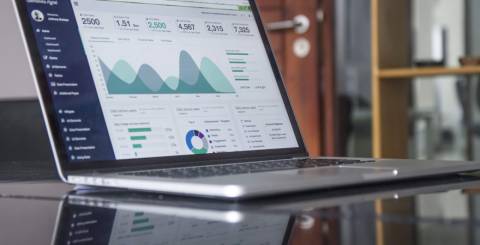Tips To Modernize Data Management in Modern Age

Data, in general, has become a rockstar in the business world. As companies continue their pursuit of efficiency, flexibility, better decision-making, and improved customer experiences, establishing robust data management has rendered them the need of the hour. Plus, given the continued evolution of technologies and the many solutions they provide, there is now a growing emphasis on modernizing data management. After all, how else should one keep up with the rapidly evolving security and app requirements and demands? And let us not forget that managing data safely and in a way compliant with a world of regulatory requirements needs painstaking stratification to source, cleanse, integrate, store, and prepare data for further use. I was wondering how you can do that too. We have got your back!
In the digital age, data is the lifeblood of businesses and organizations, fueling innovation, decision-making, and growth. However, the data management landscape constantly evolves, presenting exciting opportunities and complex challenges. Traditional data management approaches often struggle to keep pace with the demands of today's dynamic and data-rich environment. Organizations must embark on a modernization journey to thrive in this data-abundance era. In this blog, we will embark on a comprehensive exploration of the myriad ways to modernize data management. From harnessing the potential of cutting-edge technologies like AI and cloud computing to adopting agile data governance strategies, we will uncover the procedures and best practices that can empower you to unlock the full potential of your data assets while ensuring their security, accessibility, and compliance.
4 Handy Tips for Data Modernization
- Revamp data management architecture: Let us begin with the first step. Companies must start their data management modernization projects by analyzing the existing data management architecture. Identify the areas that need improvement or demonstrate the potential for improvement. Modern data management architectures usually involve distributed and scalable systems and are vital to enabling better resource utilization. They are also conducive to seamless data integration and data sharing.
- Build AI-driven data management solutions: For companies to remain competitive in the current market, it has become imperative for companies to glean the best possible insights from their data. This is where artificial intelligence (AI) and machine learning (ML) come in, which help automate and optimize data management tasks. AI, for example, can help with data integration, data cleansing, data quality assessment, and even data governance. The insights thus achieved can drive better decision-making and innovation and facilitate the discovery of new opportunities.
- Map data assets: The next step in this journey is understanding and documenting all data assets across the organization. This involves identifying sources, types, formats, and data ownership. Such a comprehensive data asset map empowers companies to have a clear view of their data landscape and, thus, ensures that they can make informed decisions about data utilization and governance.
- Data democratization: Companies must empower stakeholders with easy access to data and analytical tools, i.e., democratize their data. This involves eliminating data silos and providing self-service capabilities. Companies must also empower non-technical users to explore and analyze data without needing assistance from IT or data science teams.
Data modernization best practices, including the ones listed above, help organizations successfully modernize their data management practices and, consequently, tap into the full potential of their data assets to drive innovation and growth. But one must not forget that data modernization isn't just about implementing technologies; it is as much about fostering a data-driven culture within the organization. So, do not forget to encourage employees to base their decisions on data and insights. It would also be a wise idea to identify and reward data-driven behaviors. Such a cultural shift in the organization will help foster better collaboration and utilization of data across all levels of the organization.
Similar Articles
Enterprise cloud adoption is now a strategic goal. As modern businesses migrate to the cloud for scalability, flexibility, and cost-effectiveness, integration with DevOps principles becomes important. DevOps in the context of cloud adoption is more than just a methodology; it has shown to be a game changer, significantly enhancing efficiency, collaboration, and overall development processes.
Digital transformation is leading the way in reshaping the factories of the future. The term smart factories or industry 4.0, enables manufacturers to refine production processes, manage global market competition, and realize significant returns
In the fast-paced world of photography and videography, staying ahead of the curve requires cutting-edge technology and innovative features. One brand that has been making waves in the industry is Insta360, and for good reason. Insta360 cameras have gained popularity for their exceptional capabilities and user-friendly design.
In the ever-evolving landscape of education, fostering an early interest in coding has become crucial. One innovative tool that has taken the realm of coding education to new heights is the CoDrone. Tailored specifically for young learners, CoDrone not only introduces kids to the fascinating world of programming but also brings their coding adventures to life in the sky
In this digital era cloud computing has become an integral part of business operations. It is flexible, scalable and cost-effective, making it a top choice for many organizations. But with the arrival of various kinds of cloud solutions, selecting which one's right for your business can be a bit overwhelming.
In the dynamic realm of the Internet of Things (IoT), establishing a resilient and efficient infrastructure is imperative for the prosperity of any IoT initiative. Whether working on a smart home system, industrial automation, or healthcare solutions, thoughtful evaluation of diverse factors is indispensable
Over evolution in software testing, two prominent testing methodologies have surfaced: Big Data Testing and Traditional Database Testing. Big Data Testing is tailored for handling the extensive amounts, diverse types, and rapid data flow inherent in the big data environment.
In the fast-paced world of supply chain management, it is vital to coordinate logistics operations for businesses aiming to meet customer demands, reduce costs, and stay competitive.
The handling of projects may be characterized as a laborious and complex responsibility. From the formation of employment positions through allocating resources for managing work in progress, significant amounts of business hours and resources are used.









